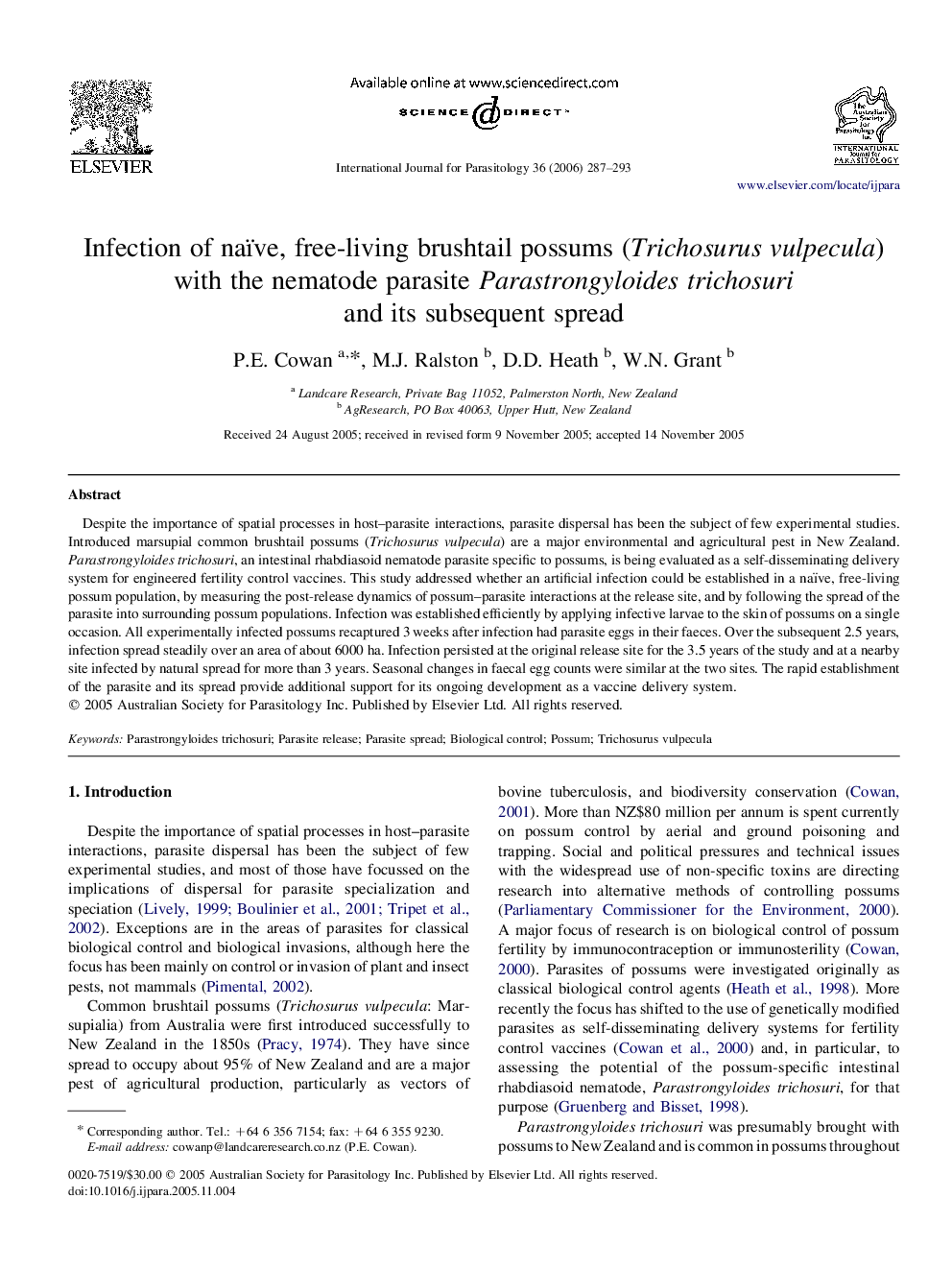| کد مقاله | کد نشریه | سال انتشار | مقاله انگلیسی | نسخه تمام متن |
|---|---|---|---|---|
| 2436749 | 1107346 | 2006 | 7 صفحه PDF | دانلود رایگان |

Despite the importance of spatial processes in host–parasite interactions, parasite dispersal has been the subject of few experimental studies. Introduced marsupial common brushtail possums (Trichosurus vulpecula) are a major environmental and agricultural pest in New Zealand. Parastrongyloides trichosuri, an intestinal rhabdiasoid nematode parasite specific to possums, is being evaluated as a self-disseminating delivery system for engineered fertility control vaccines. This study addressed whether an artificial infection could be established in a naïve, free-living possum population, by measuring the post-release dynamics of possum–parasite interactions at the release site, and by following the spread of the parasite into surrounding possum populations. Infection was established efficiently by applying infective larvae to the skin of possums on a single occasion. All experimentally infected possums recaptured 3 weeks after infection had parasite eggs in their faeces. Over the subsequent 2.5 years, infection spread steadily over an area of about 6000 ha. Infection persisted at the original release site for the 3.5 years of the study and at a nearby site infected by natural spread for more than 3 years. Seasonal changes in faecal egg counts were similar at the two sites. The rapid establishment of the parasite and its spread provide additional support for its ongoing development as a vaccine delivery system.
Journal: International Journal for Parasitology - Volume 36, Issue 3, March 2006, Pages 287–293